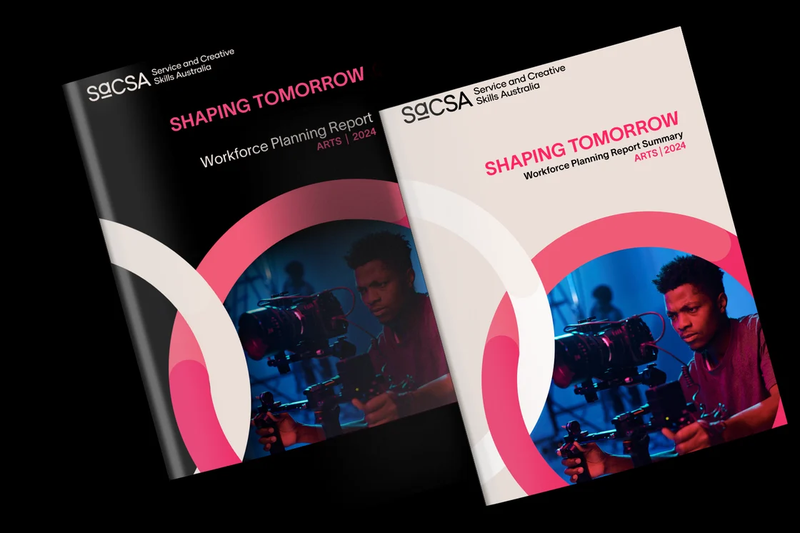NAVA welcomes SaSCA’s Workforce Planning Report for the Arts
NAVA supports the new Workforce Planning Report, which addresses workforce challenges, skills shortages, and pay inequities in the visual arts sector.
NAVA supports the new Workforce Planning Report, which addresses workforce challenges, skills shortages, and pay inequities in the visual arts sector.

The National Association for the Visual Arts (NAVA) welcomes the release of the Workforce Planning Report for the Arts, Shaping Tomorrow. This report is a significant step towards addressing the critical workforce and skills challenges within the visual arts sector. NAVA has helped shape this plan by being part of the Arts Strategic Workforce Advisory Group (SWAG), a committee established by Services and Creative Skills Australia (SaCSA) to guide national workforce strategy for the arts. The plan provides strategic solutions for skill development and workforce sustainability across the arts.
The report highlights systemic issues within the arts sector, particularly on income disparity and employment insecurity. Arts workers earn an average of $51,196 annually, far below the general workforce’s $92,029. Unpaid work is prevalent in the visual arts and craft sector, with volunteer hours and additional work outside one’s role often uncompensated.
The arts sector faces challenges in supply and retention, struggling to compete with other industries in pay, benefits, and job security. This compounds the sector’s inability to retain workers.
The visual arts and craft sector has seen a decline in practitioners and a shortage of qualified educators and technical staff. There is also a significant under-representation of First Nations peoples in mid-tier and leadership roles. The sector struggles to offer competitive salaries, relies heavily on volunteers, and lacks data on specific skills shortages across museums and galleries. More comprehensive data on workforce gaps in the visual arts will be gathered through future phases of the Arts Scoping Study.
Public galleries struggle to appoint and retain a First Nations workforce due to short-term funding, low pay, limited career pathways, and lack of mentoring. First Nations staff often face isolation as the only First Nations person in their workplace, and artists experience significant income disparities, particularly in remote areas. Leadership roles remain under-represented by Aboriginal and Torres Strait Islander people, and culturally unsafe environments contribute to high turnover.
Rising living costs increase the financial burden on artists, with higher expenses for training and education fees, studio hire, equipment, and materials. Although more artists are acquiring insurance to protect their creative businesses, rising insurance premiums create barriers. The cost of living pressures, worsened by COVID-19 restrictions and other forces continue to strain artists, who earn below the workforce average and struggle to sustain themselves through their creative practice.
“NAVA has long advocated for increased operational funding to address the decline in full-time jobs, reduce casual work, and cut down on the growing reliance on unpaid labour,” said Penelope Benton, Executive Director of NAVA. “The Workforce Plan acknowledges these issues, noting that arts funding has not kept pace with inflation and population growth, putting increasing pressure on the sector.”
The report also focuses on areas with severe skills shortages, including gallery technicians, collection managers, and arts educators. “Public galleries, especially in regional areas, are struggling to maintain adequate staffing levels, even though their audiences and program demands are growing.”
"Targeted investment in training and education for these critical roles is essential to ensuring the sector's long-term sustainability and growth."
The plan also calls for better data collection on skills gaps in the visual arts sector, particularly in museums and galleries, to help create tailored solutions.
The Workforce Plan is a crucial step towards recognising the value of art as work. It provides the groundwork to support career development, pay equity, and retention in the sector. Titled "Shaping Tomorrow," the plan provides an overview of the challenges the arts sector is facing and identifies opportunities within the Vocational Education and Training (VET) sector.
ID: Photo of two Shaping Tomorrow report covers against a black background.